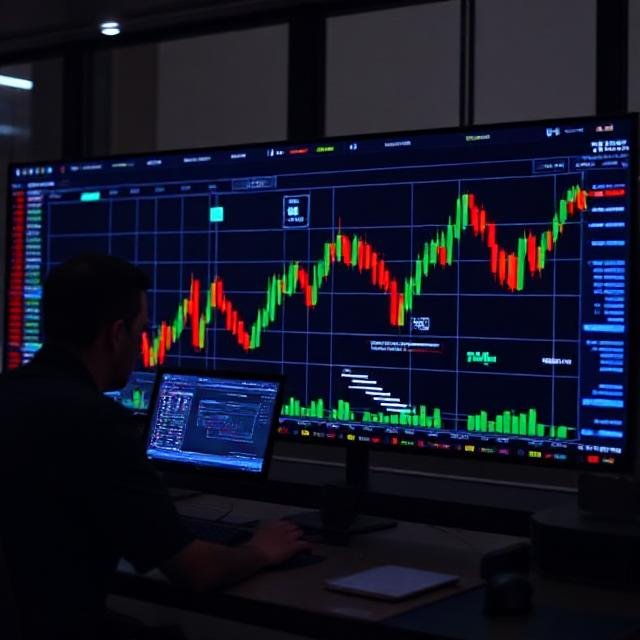Introduction: The Pull and the Mystery
They are the “wizards of Wall Street” — be-math’s, be-physic’s, and be-C.S’d PhDs who control black-box algorithms that conduct markets at the microsecond level. Welcome to the high-stakes, mystifying world of quantitative trading.
The allure is undeniable. The tales of hedge funds such as Renaissance Technologies and their legendary Medallion Fund inspire fantasies of logic-driven riches. But is this something anyone really can do?
This article sheds some light on the world of quant trading — what it is, how it works, what it takes to succeed, and whether it’s a reasonable path to wealth.
Brutal Honesty Disclaimer
Disclaimer: This post is for educational purposes only and is not to be construed as financial advice. It is not financial advice. Quantitative trading is a fiercely competitive and attrition-prone industry in which “only about one in five hired candidates will prove to be a profitable trader,” according to former Goldman Sachs partner and hedge fund manager Aaron Brown. It demands not only superb intellect and high-level problem solving talent, but the ability to look at the big picture while at the same time being able to focus in on small details.

What Exactly IS Quantitative Trading? (Beyond the Buzzwords)
Quantitative trading, aka quant trading or quant on the street, is applied mathematics, statistics, and computer science using various data and trading algorithms to detect and take advantage of trading opportunities.
The Human vs. Quant Analogy
Consider a highly skilled human trader who is pretty good at “pattern recognition:” it only takes him 1 second to check 1 chart, 10 seconds to check 10, 60 seconds to check 60 and so on. Now picture a quant system that can process millions of data points in microseconds, act immediately and doesn’t have to contend with fear, greed or exhaustion. That’s the power of quant.
Quant trading is analytical, driven by data, and devoid of emotion. It replaces intuition with statistical reasoning.
The Anatomy of a Quantitative Strategy: A Convenient Walkthrough from Idea to Execution
Stage 1: Alpha Discovery (The “Secret Sauce”)
‘You’re playing detective’ The aim is to find a market inefficiency — a repeatable pattern that offers an edge. This is called alpha. This is the creative, hypothesis-generating part of the process.
Step 2: Backtesting (The Flight Simulator)
Open the Updata PC-Backtester by clicking on the Backtester icon on the toolbar: sourceMapping The backtester looks as follows: Picture 2 – The Backtester User Interface Stop loss and take profit are little more advanced but order entry is a huge step in the right direction.
After a concept is born, you test it with historical data. This is backtesting. The main danger: overfitting — building a model that works on past data but not in live trading.
Step 3: Management And Execution Of The Risk
Those rules are programmed into an algorithm known as the “tactical allocation model”: when to buy, when to sell and how to cut losses. It is then routed to a brokerage or trading venue for execution.

The Billion-Dollar Question: So, Yes, Can It Make You Rich?
The “Yes” – Argument for Incomprehensible Wealth
Renaissance Technologies’ Medallion Fund, for example, averaged 66% annual returns, before fees. Jim Simons, the mathematician-quant who used math instead of market commentary to become a billionaire.
Why It Can Be So Profitable:
- Scalable: A wining strategy can be applied on thousand of assets.
- Speed: Algorithms are able to take advantage of opportunities in milliseconds.
- Discipline: No panics selling, no FOMO. Just rules.
The Reality Check – The Four Great Walls of Quant Trading
1. The Wall of Skill
Quant trading requires expertise in three areas:
- Statistics & Machine Learning
- Programming (Python, R, C++)
- Market Microstructure
You can’t be fabulous in one.
2. The Wall of Capital
Data, infrastructure, colocation servers, and drawdown buffers don’t come cheap. You are not here day-trading on a phone app.
3. The Wall of Technology
The top firms use microwave towers, co-located servers, and real-time feeds. Your home Wi-Fi is a tricycle to their rocket ships.
4. The Wall of Competition (“Alpha Decay”)
If a strategy works, others will discover it. Soon, it stops working. This is called alpha decay.
The Rise of the “Retail Quant”: American Public Enemy No.
So, what of the person with the laptop?
The Tools Are More Readily Available Than Ever:
- QuantConnect
- Alpaca
- Backtrader
- Kaggle + Yahoo Finance data
On other words, they offer you data access, backesting engines and coding enviroment.
But Manage Realistic Expectations
It is like attempting to compete with Wall Street from your bedroom, or building a Formula 1 car in your garage and then trying to race in the Monaco Grand Prix.” It’s a worthy battle — and fun stuff to geek out about — but winning isn’t in the cards.
Instead, consider retail quant trading to be:
- A data science and coding learning lab
- A possible side income
- A Launch pad to a career in the industry

Conclusion & Final Verdict
And so, can quantitative trading make you rich?
Yes—but probably not you.
It’s left a small cadre of specialists fabulously wealthy. But for the average Joe, it is a very harshly Darwinian financial frontier where the cost of entering is astronomical.
The Upside?
You can still win. Just not with fast riches.
Under quant firm training, you have to learn:
- Data analysis
- Critical thinking
- Programming
That are also incredibly valuable for finance, tech, and analytics jobs.
Don’t follow the dream of success—follow the mastery. The reward is in the skills you learn; that’s the true gold.
Call to Action
📘 If you’re reading this, you’re serious.
Begin with “Quantitative Trading” by Ernest Chan. It’s the industry classic.
💬 The biggest myth you’ve heard about quant trading? Drop it in the comments.
Frequently Asked Questions
Q1: Do you need a PhD to become a quant?
A: It’s not always a requirement, but it helps to have a good background in math, coding and statistics.
Q2: What is the minimum amount to start algorithmic trading?
A: Thousands of dollars to tens of thousands of dollars. If you don’t have infrastructure, clean data and margin capital to efficiently shift assets – forget it.
Q3: Is Python sufficient for quantitative trading?
A: Yes. Python reigns supreme for strategy research and backtesting. If they need execution speed (for high-frequency trading) they surround Python with C++ or Java.
Author Bio
Md Irfan Md Irfan, a data analyst and a financial blogger, possesses a BBA in Business Analytics and has over 3+ experience in quantitative data research. He has also worked on algorithmic trading systems, created backtesting models in Python, and is pursuing applications in quant finance with a focus on equity markets.
Visit – globe Finance Hub and Investopedia
Final Disclaimer
The information provided in this publication is not to be construed as investment advice, and readers are encouraged to consult a financial adviser. Quantitative trading involves significant risk. The author is always positioned in each trade Always do your due diligence and/or consult a financial professional before trading.



